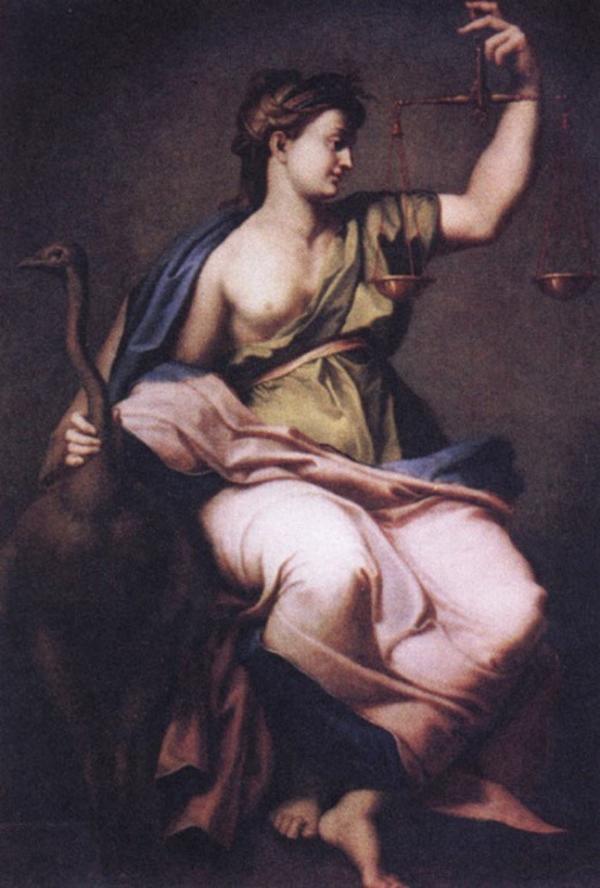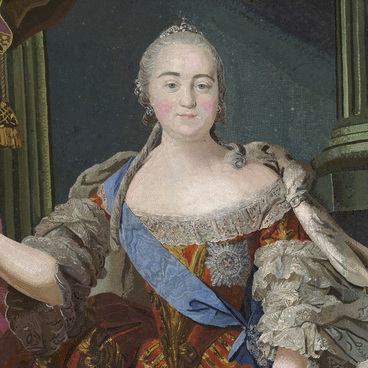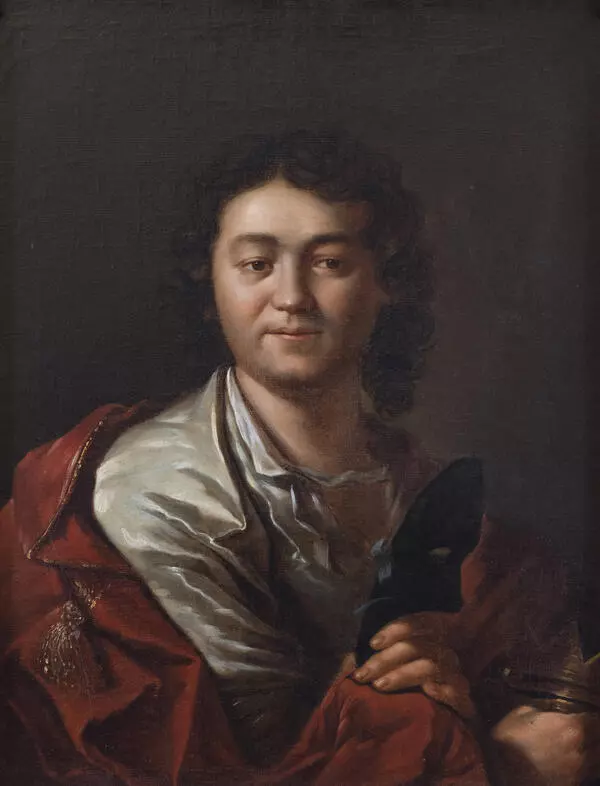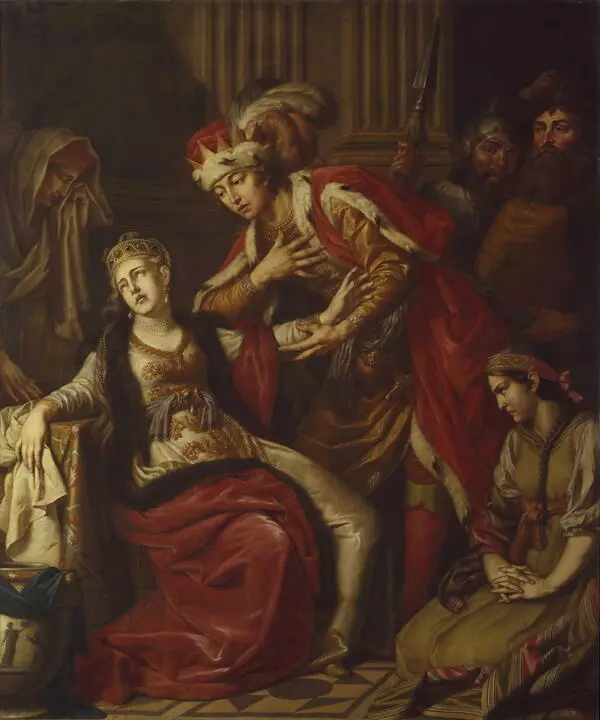Anton Losenko’s “Vladimir and Rogneda” is the first painting whose theme is Russian history. Before that, works on historical subjects were based on Greek, Roman or Scandinavian myths, or on legends of antiquity or medieval Europe.
Vladimir and Rogneda
Время создания
1770
Размер
211,5x177,5 cm
Техника
Oil on canvas
Коллекция
44
Открыть в приложении#3

Anton Losenko
Vladimir and Rogneda
#5
#6
The painting refers us to the events of the second half of the 10th century, shortly before Christianization of Rus’. Prince Vladimir, the then ruler of Novgorod, was a cruel and ruthless ruler. Once he came to request Rogneda’s, Princess of Polotsk, hand in marriage but because of his origin — he was the son of a slave woman — was refused. The Prince attacked Polotsk, killed the Princess’ family and forcibly made her his wife.
The character of Losenko’s painting, however, does not look all that immoral. He has repented of his deed and is asking for Rogneda’s forgiveness. The artist made this painting as an assignment from the Academy of Arts, and the assignment was such that he could not depict tragic moments. Therefore he treated the Prince’s deeds in the spirit of the 18th century enlightenment ideas of a fair and kind sovereign.
#7
The painting does not aspire to being realistic; its contents are a convention. Its composition and scenery look like a theatre stage, the gestures and facial expressions are also deliberately theatrical, if not histrionic. It is not by accident that the artist used his contemporary, a well-known tragic actor Ivan Dmitrievsky, to paint his main character from.
#8
The way the painter depicted clothes and scenery is remarkable. The historical sources he used were the “Russian Primary Chronicle” [Tale of Bygone Years] and Mikhail Lomonosov’s work ‘Old Russian History’. However, no detailed materials about the life style and culture of ancient times were available at that time. That is why the background architecture looks like taken from the antique times, and costumes like 18th century dresses.
Not only did the artist become the founder of Russian historical painting but he was among the first to depict his characters’ emotions and passions. At that time, it was considered to be up to literature and theatre to convey people’s inner feelings while fine arts demonstrated ceremonial portraits or abstracted idealistic images.
#9
The ‘Vladimir and Rogneda’ is an example of classicism epoch painting. The artist was also influenced by Renaissance art — before he created the painting, he had studied in France and Italy. He is known to have done copies of Rafael’s works. The works painted at that time even earned him the name of the “Russian Rafael”.
Anton Losenko. Justice. Copy from the painting of the Room of Constantine at the Palace of the Vatican done by Rafael’s workshop. Oil on canvas. 1768. The Academy of Arts Museum.
#10
The subject from old Russia history was much appreciated by the artist’s contemporaries. He was awarded the title of a full member of the Academy for this painting and became associate professor. Two years later, in 1772, he was appointed Director of the Academy of Arts. Losenko gave practical lessons to Academy students and raised a whole generation of Russian painters.
#11
State Russian Museum
читать дальшескрыть
00:00
00:00
1x
Vladimir and Rogneda
Время создания
1770
Размер
211,5x177,5 cm
Техника
Oil on canvas
Коллекция
44
Открыть в приложении
Поделиться






